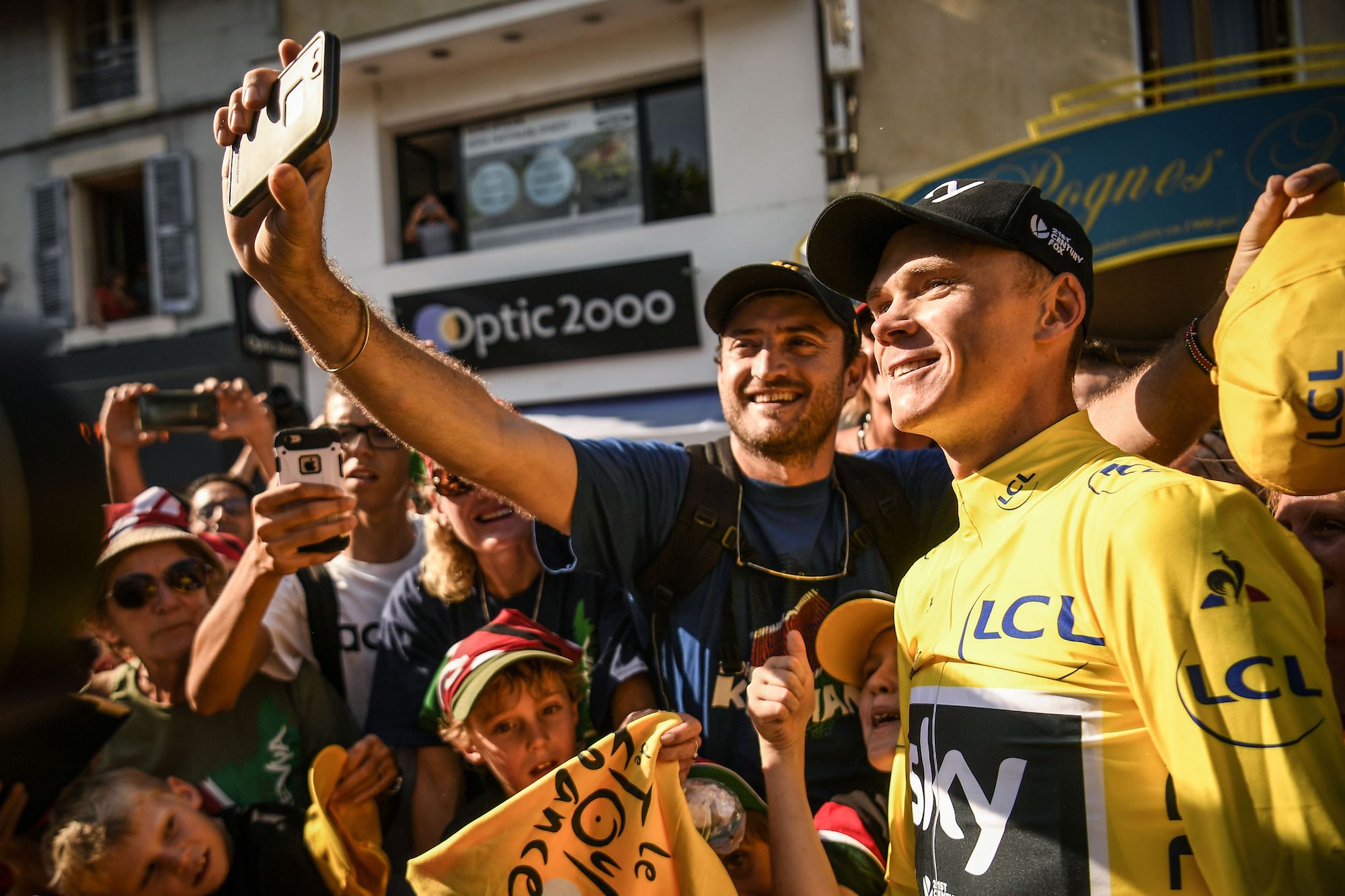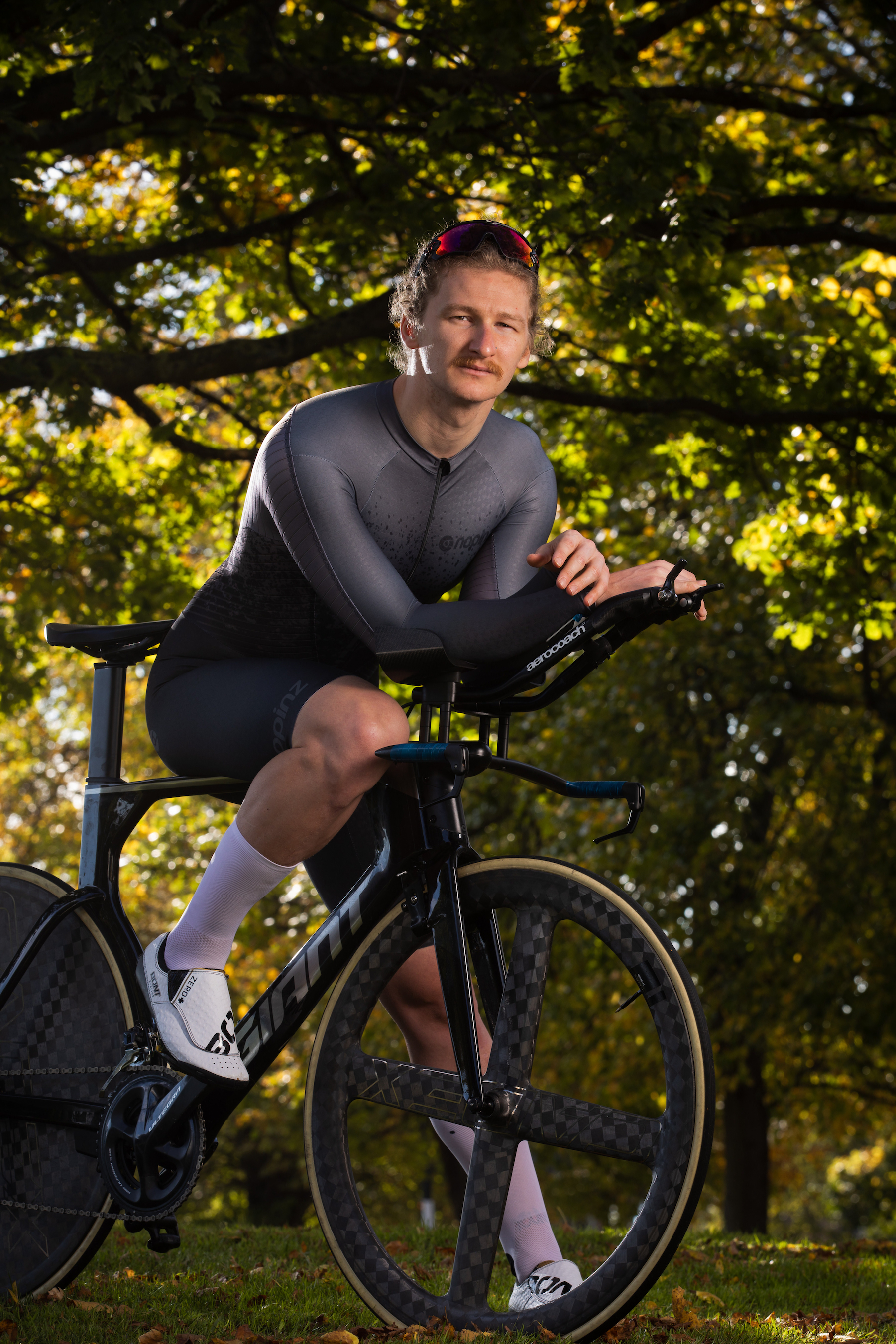Walking the line between retweets and recovery – How social media has shaped professional cycling
Facebook, Twitter and Instagram have given fans more access to the stars than ever before, but how do athletes and teams balance the demands?


“Yesterday, someone messaged me on Twitter and said I’m a doper, so I called him a paedophile” – the unforgettable words of Thomas De Gendt, one of the most accomplished riders in the Tour de France peloton.
“When you don’t have proof, you can’t point fingers.”
De Gendt is a 360-degree superstar – the winner of stages in all three Grand Tours, a podium finisher in the Giro d’Italia, and social media sage.
After almost a decade riding for WorldTour teams, the 32-year-old has seen the ebbs and flows of professional cycling, including the digital revolution that continues to change the shape of the sport.
“I only started using social media in 2013, then I used Twitter, and I joined Instagram in 2016. It’s getting important for the sponsors,” De Gendt explained, speaking outside the Lotto-Soudal team bus ahead of stage 14 of the 2019 Tour de France.
“I want to show people how I train, how I eat, how I do training camps, all these things. I don’t post much about my kids or my wife because that’s a bit more private. When I’m at a race I like to show them what my dinner is, because a lot of people wanted to know what cyclists eat. When I can throw in a joke sometimes I’ll do it, and see what the response is.
Get The Leadout Newsletter
The latest race content, interviews, features, reviews and expert buying guides, direct to your inbox!
“They encourage us to tweet things about the sponsors, but of course people know when you’re tweeting something with an advertisement in.
“So I try to tweet in a less serious way so it gets more visibility, then the sponsor also gets noticed more.”
Social media is changing professional cycling, like it’s changing everything else.
Teams can now interact with their fans immediately, directly, and with complete control over the message in a way that has never been seen before, offering infinite opportunities to plug a sponsor, draw in more supporters and, in rare cases, even ask for cash.
Inevitably with this evolution, the sport needs to bring in staff that know how to navigate the social media labyrinth.
Team Ineos, Britain’s only top-tier cycling team, are one of the most adept WorldTour outfits when it comes to corralling support online.
George Solomon, a digital and communications executive with the team, is one of the people handling their digital presence (as well as liaising with press during races).
“We try and work to the mantra of ‘social first,’ because that’s where our main audience is,” Solomon told Cycling Weekly.
“If you look at our numbers, we have 2.6 million people across our three or four main platforms, so that’s a pretty serious thing to manage. You can’t look at that with the old mentality of social media doesn’t really matter.
“We’re increasingly seeing that our partners will come to the team and want to know social numbers, how we can help with CRM [Customer Relationship Management] and data, like our email database, so its an important area and I don’t see it stopping anytime soon.”
Anyone following pro riders and teams on social media will notice the disparities between how they operate, with many live-tweeting as stages develop, posting Instagram stories from races, and publishing regular press releases on their websites, while some clearly treat their digital presence as an afterthought.
But what does a team like Ineos, and perhaps more importantly its sponsors, look for from their riders on social media?
“We’re always tying to walk that line between not impacting on performance, but also doing the best job we can," Solomon added.
“[For our riders] there’s no draconian law. A couple of guys aren’t on it, that’s fine. I think people might perceive that we would be quite controlling with what the guys do, but it’s very much the opposite. You keep an overview from afar, but it’s great how authentic it is.”
>>> Box Hill now the most popular climb in the world
British time trial specialist Alex Dowsett is one pro who balances his life as a world-class athlete with a strong social media presence, both on Twitter on where he cracks some (pretty hit and miss) jokes, Instagram with an insight into the peloton, and on YouTube where he and partner Chanel regularly posts vlogs.
“A lot of riders take a lot more care for it,” the Katusha-Alpecin rider said.
“But social media isn’t going to keep you in a job, social media isn’t going to get you a contract. It’s a nice bonus to a team if you are present on social media, but I wouldn’t rely on it. If I was delete all my accounts now, in terms of my racing nothing would change. Maybe a couple of sponsors would be a bit disgruntled but at the end of the day it’s still what you do on the bike that matters the most.”
And how does he approach the online world? “I try not to take it too seriously. Unfortunately you do open yourself up to negativity and ****holes basically. If I need to switch it off, I switch it off and don’t worry too much about it.
"I try and make people laugh and put things out that I find amusing.”
Social media can even help save a struggling team, as American outfit EF Education First proved in late 2017, when a new sponsor pulled out at the 11th hour.
Then racing as Cannondale-Drapac, the team faced closure if they couldn’t find a replacement, but a huge outpouring of support online prompted management to turn to fans for funding, setting up a crowdfunding campaign.
The plea raised a staggering £454,000 from 4,672 backers. While this isn’t enough to fund a cycling team at the highest level, the exposure and obvious support for the team did help attract a new headline sponsor, Education First.
Jonathan Vaughters’s team have continued to develop their social media presence, including their Gone Racing series of short films.
When Cycling Weekly spoke with EF Education First rider Tom Scully ahead of stage 11 of the Tour in Albi, the Kiwi had been tasked with filming himself signing on for the day for a new episode of Gone Racing.
“I think there’s a huge market and audience out there. You’d be surprised when you put out a photo how many likes and comments and shares it gets, especially stuff they don’t normally see like inside the bus.
“The team is pretty active. We have a nice brand, a nice image. There’s a lot of people around the world following the team, so the more content we put out there, the better. They love it, we love it.”
Ironically for a team with such a notable presence on social media, the team enforce a phone ban on their riders during meals after a race, a way of bringing team-mates closer together.
Scully added: “There has been times when we say no phones at the table, but actually we’ve got a pretty good group of guys and we’re all pretty sociable anyway, so at the dinner table we sit and talk to each other like normal people do.
“It’s good for the atmosphere in the team.”
What next for social media and cycling then?
“I think not necessarily just in cycling but in wider sport, there’s more of an athlete led focus,” Team Ineos’s Solomon said.
“If you look at Peter Sagan for example, his team put out a Sagan report pretty much every day. I can certainly see the sport heading that way. You’ll have athletes as their own content creators.
“I can’t see it slowing down. I think it’s only going to get bigger.”
But as anyone who has spent five minutes on the Internet will know, there is a darker side to contend with as well.
Trolls can spoil any corner of the social media and professional cycling is no different, but how do the pros handle the added scrutiny and, in some cases, outright libellous claims fired their way?
“Cycling has its doubts,” De Gendt said, describing his proactive approach when he is accused of doping by anonymous accounts online.
“A lot of riders who said they were clean, they weren’t as clean as they said. We still have to take responsibility for that and a lot of people still look at cycling in a critical way, which is normal, nobody has to be naïve, but some people start pointing fingers and saying ‘you are motor doping, you are motor doping.’
“I like to go into conversations with them and ask where is the proof and they don’t have any proof. It’s normal that people have doubts.”
And as De Gendt’s tactic shows, when reasoned debate fails, you can always fight fire with fire.

Thank you for reading 20 articles this month* Join now for unlimited access
Enjoy your first month for just £1 / $1 / €1
*Read 5 free articles per month without a subscription

Join now for unlimited access
Try first month for just £1 / $1 / €1
Alex Ballinger is editor of BikeBiz magazine, the leading publication for the UK cycle industry, and is the former digital news editor for CyclingWeekly.com. After gaining experience in local newsrooms, national newspapers and in digital journalism, Alex found his calling in cycling, first as a reporter, then as news editor responsible for Cycling Weekly's online news output, and now as the editor of BikeBiz. Since pro cycling first captured his heart during the 2010 Tour de France (specifically the Contador-Schleck battle) Alex covered three Tours de France, multiple editions of the Tour of Britain, and the World Championships, while both writing and video presenting for Cycling Weekly. He also specialises in fitness writing, often throwing himself into the deep end to help readers improve their own power numbers. Away from the desk, Alex can be found racing time trials, riding BMX and mountain bikes, or exploring off-road on his gravel bike. He’s also an avid gamer, and can usually be found buried in an eclectic selection of books.
-
 A bike rack with an app? Wahoo’s latest, and a hub silencer – Sea Otter Classic tech highlights, Part 2
A bike rack with an app? Wahoo’s latest, and a hub silencer – Sea Otter Classic tech highlights, Part 2A few standout pieces of gear from North America's biggest bike gathering
By Anne-Marije Rook
-
 Cycling's riders need more protection from mindless 'fans' at races to avoid another Mathieu van der Poel Paris-Roubaix bottle incident
Cycling's riders need more protection from mindless 'fans' at races to avoid another Mathieu van der Poel Paris-Roubaix bottle incidentCycling's authorities must do everything within their power to prevent spectators from assaulting riders
By Tom Thewlis